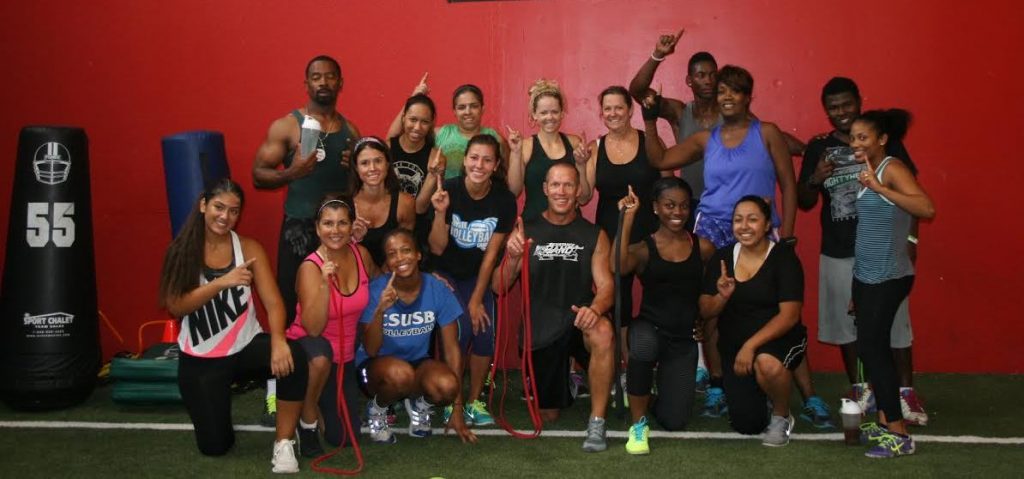Creating a Double Band Cable Column System
I am a big fan of double cable column training, especially when it is a double band cable column system. Not only does it allow you to do all the normal cable column exercises, but it also provides you with the setup to do some very unique RBT only exercises.
4 Benefits of Double Band Cable Column Systems
1. Train Using Horizontal Vectors
The biggest benefit of double band cable column systems is that it allows you to train using horizontal force vectors. This is much more joint friendly than always using vertical joint loaded forces. Incorporating horizontal vectors allows you to train in rotational and lateral planes while not having to load your spine.
It also enables you to train the body to learn how to handle shear forces. These are the forces, which over time, create the most wear on our joints. Obviously weighted cable column systems are not practical for home use due to their cost, space requirements and need for heavy, bulky weights to be moved around.
In comparison, a double band cable column system is cost effective, requires essentially no space, requires moving bands that weigh less than 5 pounds total, and allows you to train 10 times the number of exercises you would with a weighted cable column with unlimited resistance.
2. Perform Reciprocal Upper Body Training
One of the other huge benefits of a double band cable column system is being able to do reciprocal upper body training. Reciprocal upper body training allows you to strength train your upper body while challenging your hips and trunk at the same time. However, it requires you to be able to turn your body to hit different planes. A typical weighted cable column does not provide the necessary space between columns to accommodate this.
Knowing how the body is a total kinetic chain, this reciprocal training is perfect for teaching adults, athletes and seniors how to activate their hips and trunk while simultaneously performing an upper body pushing, pressing and pulling strength drill.
3. Build a Better Hip Hinge to Protect the Lower Back
Hip hinging is something many individuals lose as they get older. Efficiently hip hinging instantly takes pressure off the low back on any lifting or reaching drill. Considering the low back is the #1 most frequently injured area on the body, having a solid hip hinge is critical to low back health. Reciprocal band training with the band placed at the hips, trains and strengthens hip hinging on every rep regardless of what the upper body exercise is.
4. Increase Metabolic Conditioning and Calorie Expenditure
Anytime we can increase the load on the body, we create an opportunity to increase metabolic output and calorie expenditure. Reciprocal band training with the bands at the hip obviously brings in more glute training. Considering the glutes are the largest muscle in the body, the potential for greater calorie expenditure goes way up. Reciprocal band training that requires a push and pull to be done simultaneously, instantly brings in the trunk muscles. Once again another opportunity to bring in more work output.
Below, I will share with you 29 Unique Reciprocal Upper Body Exercises you can do on a double band cable column system that is impossible to do with any weight-based cable column system.
How to Build Your Own Double Band Cable Column System
How to Begin to Master 29 Double Band Cable Column Reciprocal Upper Body Strength Exercises
Like with any RBT exercise series, start by mastering 5 exercises at a time. Once these 5 exercises are going well, add in 2 additional exercises each week. Using this progression helps avoid the potential for overuse injuries.
Exercise Progression – 4 Things to Keep in Mind
- The adding in of a step action is an advanced progression that requires timing the upper and lower body movement.
- Make sure to start with stationary movements first.
- Keep in mind that pushing and pressing movements are going to challenge the trunk to stabilizer the low back. Keep movement tempo slow at first.
- The bigger the amplitude of movement, the greater the need for stabilization. Keep tempo slow with increases in movement amplitude.
29 Double Band Cable Column Exercises
- Rows
- Squat Rows
- Staggered Rows
- 1 Arm Squat Row
- 1 Arm Rotational Row
- Hose Pulls
- Hose Pull Reaches
- Chest Press
- Squat Chest Press
- Step Chest Press
- 1 Arm Push
- 1 Arm Rotational Push
- Bicep Curls
- Hip Curls
- Triceps Press
- Step Back Triceps Press
- Reverse Flies
- Flies
- Push – Pull
- Squat Push – Pull
- Rotational Push – Pull
- Overhead Squats
- Anti – Rotation
- Anti – Rotation Step
- Anti – Lateral Flexion
- Anti – Lateral Flexion Step
- Anti – Extension
- Anti – Extension Step
- Halo
Build Your Own Double Band Cable Column System
Here is what you will need:
Band Cable Column Equipment



